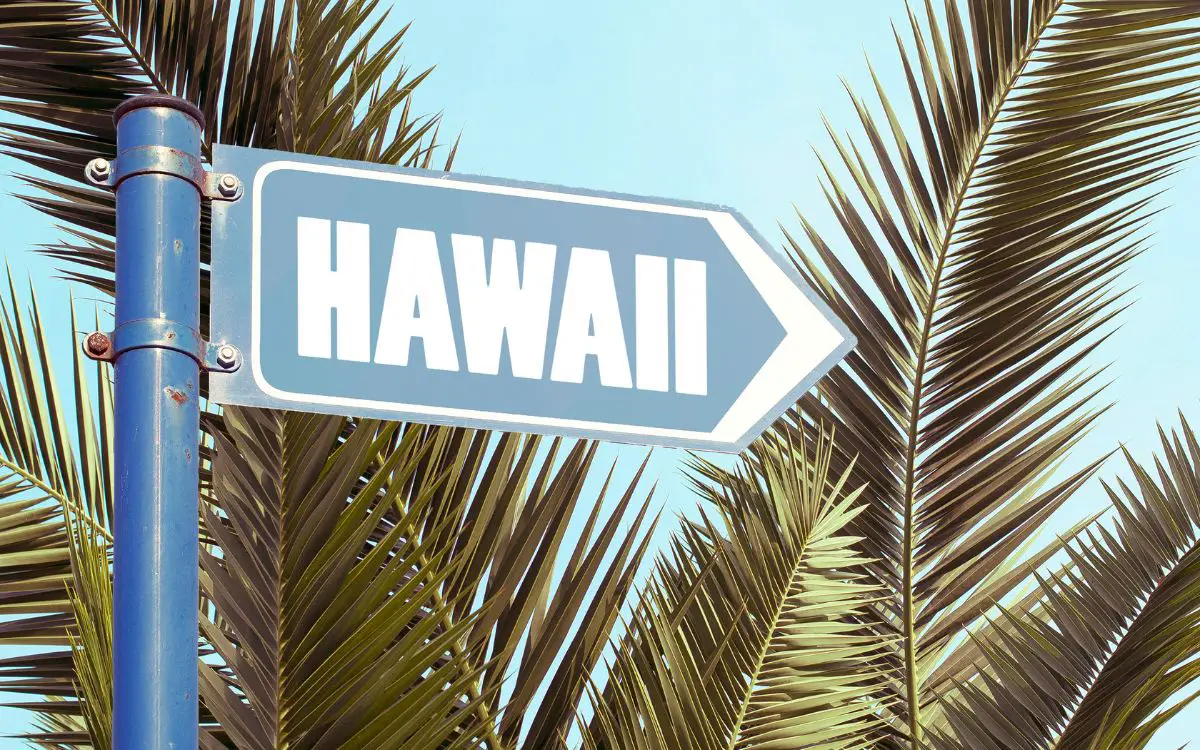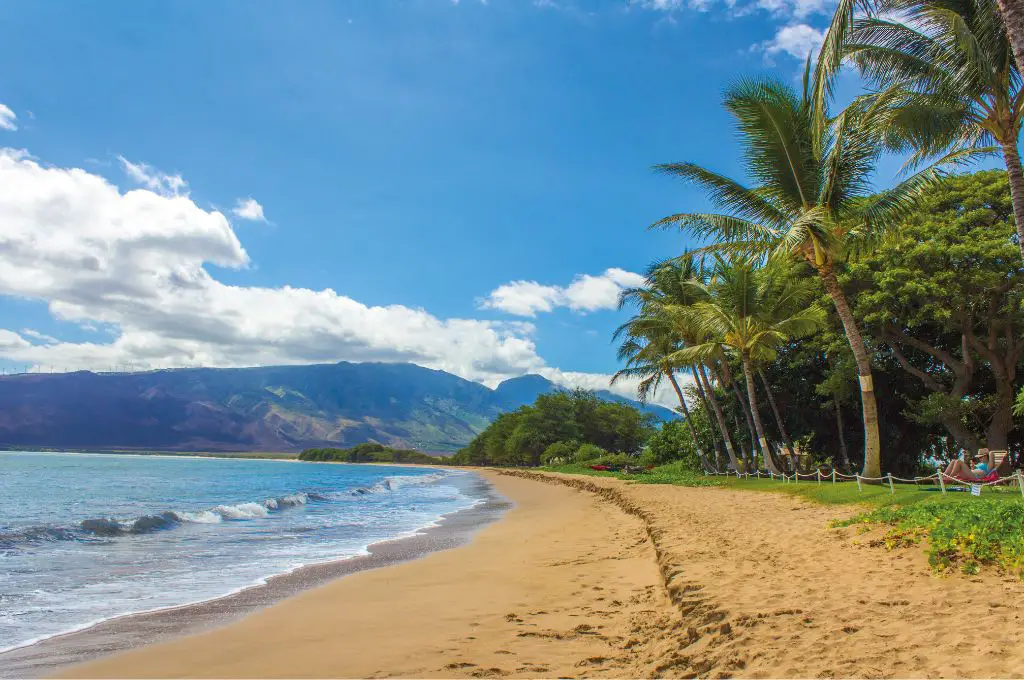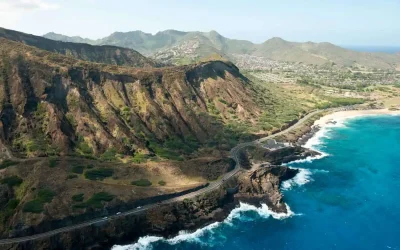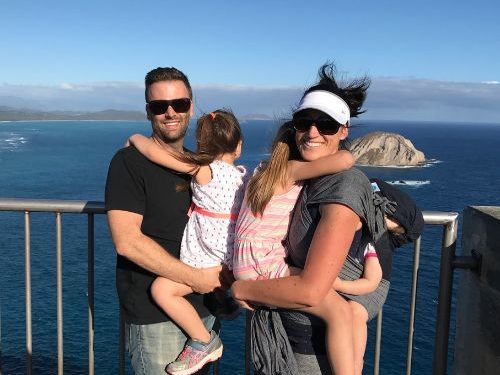23 Critical Things to Know for Planning a Trip to Hawaii (2024)

Planning a trip to Hawaii can be both thrilling and daunting. The tropical paradise houses an abundance of spectacular landscapes, rich culture, and fascinating history that promise unforgettable memories.
However, the details of your itinerary can make or break your experience in Hawaii. In this guide I’ll help you navigate these intricacies ensuring you get the most out of your trip by focusing on 23 critical things to know for planning a trip to Hawaii.
Ready for some sun-soaked fun? Let’s go!
This planning a trip to Hawaii post is written by Bryan Murphy, an expert in Hawaii travel and a top-rated podcast host.
Information Disclaimer: This website gives general info and isn’t legal or official advice. It helps travelers with tips but can’t replace personal abilities, fitness, experience, or local knowledge, which you are fully liable for. All activities have risks; assess current conditions and follow local laws and signage.
Planning Your Trip? Use Our Favorite Resources!
🏨 Accommodations: We recommend Expedia
✈️ Flights: For the cheapest flights, we use Skyscanner
🚗 Rental Car: We recommend Discount Hawaii Car Rental
🌋 Hawaii Tours & Attractions: We recommend Get Your Guide
📱 Mobile Tour App: Our favorite is Shaka Guide
Before you go on your trip to Hawaii, it’s important to think about a few things. You should decide which island or islands you want to visit, figure out the best time to go, find a place to stay, and consider whether you need to rent a car.
Good planning is essential for a great vacation in Hawaii.
Let’s delve into these important details so you can make the most out of your time in paradise.
Key Takeaways of Things to Know for Planing a Trip to Hawaii
- Choose the right island(s) to visit in Hawaii based on your preferences and what you want to see.
- Plan your trip during the best time of year, considering weather, crowds, and costs.
- Determine the length of your stay.
- Decide between hotels or vacation rentals for accommodation based on your budget and desired experience.
- Renting a car is recommended to explore Hawaii’s islands at your own pace.
- Budget for trip expenses including accommodation, transportation, food, and activities.
- Book accommodations and activities in advance to secure the best options and avoid last-minute stress.
- Try local food like fresh seafood, traditional dishes, and shave ice to immerse yourself in Hawaiian culture.
Before Your Trip to Hawaii
1. Choose which island(s) to visit
In Hawaii, each island has its own charm. Oahu is full of life with the city, history, and Waikiki Beach. Maui boasts lovely beaches and a special drive called the Road to Hana. The Big Island lets you see active volcanoes, black sand beaches, and many nature spots.
If you like green places with cliffs and waterfalls, Kauai may be for you. For a quiet trip with less busy scenes, pick Molokai or Lanai. Decide which sights matter most to make your choice easy!
RELATED PODCAST: Best Island to Visit
2. Know the best time of year to go
The best time to visit Hawaii is not the same for everyone. It depends on what you are looking for in your trip. For those who want warm weather, the summer months are great. But be ready for more humidity and some rain showers now and then.
If you enjoy cooler temperatures, plan your trip during the winter months. Expect a bit of rain too.
Thinking about costs? September can help you save money as it’s the cheapest month to go there! Mid-December to mid-April is when Hawaii gets many visitors so it might get crowded.
Spring and fall have milder weather with fewer people around making them good choices too.
RELATED PODCAST: Best Time to Visit Hawaii
3. Determine length of stay
Figuring out how long to stay is key for your Hawaii trip. Aim for 4-7 days on each island you want to see. This gives you enough time to enjoy the beaches, try local foods, and learn about Hawaiian culture.
It also lets you fit in fun things like snorkeling or a day trip on a cruise. Your vacation will feel relaxed if you give yourself plenty of time in Hawaii. So, decide early on how many days you’ll spend there.
4. Decide on accommodations (hotel or vacation rental)
When planning your trip to Hawaii, one important decision is choosing where to stay. You have two main options: hotels or vacation rentals. Hotels in Hawaii can range from budget-friendly options to luxurious resorts, offering various amenities and services.
On the other hand, vacation rentals can provide a more authentic and immersive experience of Hawaiian culture. They often come with a kitchen or kitchenette, allowing you to save money on dining expenses by preparing your own meals.
Choosing where to stay in Hawaii depends on what you like, how much you can spend, and what kind of trip you want. You can pick either a hotel or a vacation rental.
5. Consider renting a car
Renting a car is highly recommended when visiting Hawaii. It will give you the flexibility and convenience to explore the islands at your own pace. Public transportation in Hawaii is limited, so having a rental car allows you to easily get around and see all the sights.
With heavy traffic in some areas, having your own vehicle can help you avoid delays and make the most of your time on vacation. While renting a car may not be necessary for a stay in Waikiki, it is still beneficial if you plan on exploring beyond that area.
So consider renting a car to enjoy your Hawaii vacation fully!
6. Budget for trip expenses
Hawaii can be an expensive destination, so it’s important to budget for your trip expenses. Accommodation costs can vary depending on where you stay and the type of accommodation you choose.
Transportation costs include flights to Hawaii and possibly inter-island flights or ferry rides. Rental cars are another expense to consider. Food and dining expenses can add up, especially if you eat at high-end restaurants or resorts.
It’s also important to be cautious of potential scams or fraudulent activity related to travel expenses in Hawaii. Plan ahead, research prices, and allocate your budget wisely to make the most of your trip without breaking the bank.
7. Book in advance
Booking your accommodations and activities in advance is crucial when planning a trip to Hawaii. With its popularity as a vacation destination, hotels and vacation rentals can fill up quickly, especially during peak seasons.
By booking ahead of time, you’ll secure the best options for your stay and avoid last-minute stress. Additionally, popular activities like luaus or guided tours may have limited availability if not reserved beforehand.
So don’t wait until the last minute – plan ahead and ensure a smooth and enjoyable trip to paradise!
Plan Your Activities on Each Island

8. Consider a Hawaiian cruise
A Hawaiian cruise is a fantastic way to explore the beautiful islands and have a variety of activities to enjoy. Whether you’re visiting Maui, Oahu, or the Big Island, a cruise allows you to experience different parts of Hawaii without constantly packing and unpacking.
You can hop from one island to another and take part in exciting excursions like snorkeling, hiking, or exploring hidden beaches. Plus, all your meals and accommodations are taken care of on the ship, making it convenient and hassle-free.
So if you want an unforgettable adventure in Hawaii, consider booking a Hawaiian cruise for an amazing experience.
9. Research lesser-known islands
When planning your Hawaii trip, it’s important to research lesser-known islands. While popular destinations like Oahu and Maui are well-known, there are other hidden gems waiting to be discovered.
By exploring these lesser-known islands, you can experience a more authentic and off-the-beaten-path side of Hawaii. Take the time to learn about these islands, their unique landscapes, local culture, and activities they offer.
Follow the lead of local residents who can provide valuable insights and recommendations for making the most of your visit to these hidden treasures in Hawaii.
10. Choose which side of the island to stay on
When choosing where to stay on the Hawaiian islands, it’s important to consider which side of the island you want to be on. Each side offers a different experience and scenery. For example, on Oahu, the south shore is more touristy with bustling Waikiki Beach and vibrant nightlife, while the north shore is known for its laid-back vibe and famous surfing spots like Pipeline.
On Maui, the west side is known for its beautiful sunsets and lively atmosphere, while the east side (Hana) offers peaceful beaches and lush landscapes along the Road to Hana.
It’s worth researching each island’s different regions to find the perfect spot that suits your interests and preferences during your Hawaii trip.
11. Familiarize yourself with the geography
Hawaii is made up of multiple islands, and each island has its own unique geography. It’s important to familiarize yourself with the layout of the islands before your trip.
Remember that there are no bridges between the islands, so driving from one to another isn’t possible.
The easiest way to travel between islands is by taking inter-island flights. Rental cars are recommended for getting around within each island. So make sure you know which island(s) you want to visit and plan accordingly for transportation options during your trip.
12. Try local food and experiences

When visiting Hawaii, don’t miss out on the opportunity to try the local food and experiences. Eating local dishes will give you an authentic taste of the islands and allow you to immerse yourself in Hawaiian culture.
Sample freshly caught seafood like Mahi Mahi, Ono, Opah, and Ahi for a delicious treat. Don’t forget to try locally grown produce such as dragon fruit, coconut, lilikoi, pineapples, and locally produced honey.
For a true taste of Hawaii, indulge in traditional dishes like poi (made from taro root), laulau (pork or fish wrapped in taro leaves), kalua pig (slow-roasted pork), and poke (marinated raw fish).
Tips for During Your Trip
During your trip, there are several tips that can enhance your experience in Hawaii. From packing reef-safe sunscreen to immersing yourself in Hawaiian culture, these suggestions will help you make the most of your time on the islands.
13. Pack reef-safe sunscreen
To protect Hawaii’s beautiful reefs, it’s important to pack reef-safe sunscreen for your trip. Reef-safe sunscreens are free from harmful chemicals that can damage the coral reefs.
Get our list of recommendations here. By using reef-safe sunscreen, you can enjoy the beaches and snorkeling while being mindful of the environment. So don’t forget to pack your reef-safe sunscreen and take care of Hawaii’s stunning marine life during your visit!
14. Go snorkeling
Snorkeling in Hawaii is a must-do activity for visitors. You’ll be amazed by the vibrant underwater world with colorful fish, sea turtles, and even octopi. Make sure to bring reef-safe sunscreen to protect yourself and the delicate coral reefs.
Snorkeling is a great way to explore the beauty of Hawaii’s marine life and create unforgettable memories during your trip.
15. Learn about Hawaiian culture
Hawaiian culture is an essential part of your trip to Hawaii. By learning about the customs and traditions, you can show respect and appreciation for the local community.
The Hawaiian language is unique, with the ʻokina punctuation mark influencing word pronunciation and meaning.
Take the time to understand and use basic Hawaiian words like “aloha” (hello/goodbye) and “mahalo” (thank you). Embrace cultural activities like hula dancing, lei making, and traditional music performances.
Visit museums, art galleries, or historical sites to delve deeper into Hawaiian history. By immersing yourself in Hawaiian culture, you’ll have a richer experience during your trip.
RELATED PODCAST: The Ban and Revitalization of the Hawaiian Language
RELATED PODCAST: Hawaiian Words to Know Before Visiting
16. Don’t rely on airport lei greetings
When you arrive at the airport in Hawaii, it may be tempting to expect a beautiful lei greeting. However, it’s important to know that lei greetings are not as common as they used to be.
Many airports no longer offer this service or charge an extra fee for it. Instead of relying on airport lei greetings, consider purchasing your own lei from local vendors or flower shops before arriving in Hawaii.
This way, you can still experience the tradition and have a beautiful welcome without any disappointments at the airport.
17. Follow cultural etiquette
Respecting local customs and traditions is very important when visiting Hawaii. The residents expect visitors to follow cultural etiquette. It’s essential to be mindful of the Hawaiian culture and show respect for their traditions.
Learn about the customs, such as removing your shoes before entering someone’s home and asking permission before taking photographs at sacred sites.
Additionally, it is crucial to understand that the use of the ʻokina punctuation mark in the Hawaiian language plays a significant role in determining word pronunciation and meaning.
By being aware of these cultural norms, you can ensure a respectful and enjoyable experience during your trip to Hawaii.
18. Be mindful of the environment
When visiting Hawaii, it’s important to be mindful of the environment. The residents of Hawaii take great pride in preserving their natural surroundings, and as visitors, we should follow their lead.
One way to do this is by bringing our own reusable bags when shopping since plastic bags are banned in Hawaii. This simple action helps reduce plastic waste and protects the beautiful landscapes that make Hawaii so special.
Another aspect of being mindful of the environment in Hawaii is understanding and adhering to surfing etiquette. Respect for the ocean and other surfers is crucial for both safety and environmental conservation.
Additionally, it’s essential to check the weather report before engaging in outdoor activities like hiking or swimming near canyons or waterfalls because even on sunny days, flash floods can occur unexpectedly.
19. Volunteer and give back
Volunteering and giving back during your trip to Hawaii is highly encouraged. Not only does it allow you to experience the culture in a meaningful way, but it also helps support local communities and conservation efforts.
There are plenty of opportunities to get involved, whether it’s participating in beach clean-ups, helping at wildlife sanctuaries, or assisting with community projects. By volunteering, you can make a positive impact during your time on the islands and leave a lasting impression on both yourself and the local people.
20. Book a luau for the end of your trip
To end your trip to Hawaii on a high note, make sure to book a luau. A luau is a traditional Hawaiian feast that includes delicious food, music, dancing, and entertainment. It’s a fun and festive way to immerse yourself in Hawaiian culture and create lasting memories.
Plus, it’s a great opportunity to sample authentic Hawaiian cuisine like kalua pig, poi, and haupia. So don’t forget to reserve your spot at a luau before you leave Hawaii – it’ll be the perfect way to celebrate the end of your amazing trip!
21. Plan your visits to beaches

When planning your visits to beaches in Hawaii, there are a few things to keep in mind. First, check the weather forecast to ensure that conditions are safe for swimming and sunbathing.
Additionally, ask locals or lifeguards for any specific beach recommendations or directions. Remember that some beaches may have strong currents or hazardous conditions, so always pay attention to warning signs and follow safety guidelines.
Lastly, be mindful of leaving valuables unattended on the beach and consider bringing reef-safe sunscreen to protect the fragile marine ecosystem. Enjoy your time exploring Hawaii’s beautiful beaches responsibly!
22. Check weather and ask for directions
Before heading out for any outdoor activities in Hawaii, it’s important to check the weather report. Even if the sun is shining, there can still be flash floods in narrow canyons or waterfalls.
So always stay updated on the current conditions to ensure your safety. Additionally, don’t hesitate to ask for directions when exploring the islands. The locals are friendly and knowledgeable, and they can help you find the best routes and hidden gems.
It’s better to be well-prepared and informed before embarking on any adventures during your Hawaii trip!
23. Be mindful of leaving valuables in rentals
When you’re visiting Hawaii, it’s important to take precautions and protect your belongings. Theft from rental cars is unfortunately common in Hawaii, so make sure you don’t leave any valuables inside your rental vehicle.
This includes things like electronics, wallets, purses, and even luggage. If possible, try to keep all your valuable items with you or locked away safely in your accommodations.
Being mindful of leaving valuables in rentals can help ensure a safe and enjoyable trip without any unexpected incidents.
FAQs for Planning a Trip to Hawaii
1. What are some good travel tips for planning a trip to Hawaii?
For traveling to Hawaii, you’ll want to book your car rental far in advance and consider discount Hawaii car rentals. Shopping in Honolulu, exploring various islands, and knowing what things to do can make your trip better.
2. How long should I plan my stay in Hawaii?
You may want ten days or even longer for visiting all the experiences that the Hawaiian islands offer. Your vacation time depends on which island you’re visiting and what you wish to do.
3. Is it expensive to head to Hawaii?
Yes, going to Hawaii is often costly due to its beauty and unique offerings. But there’s always a way of saving money by booking early or finding good deals.
4. What is the best island in Hawaii for first-time visitors?
If it’s your first time going to Hawaii, Oahu with Honolulu International Airport might be an excellent place for you because of many top things see here.
5.What should I know before going on this trip?
Before your vacation in 2023, look at top travel tips like how much money you’ll need and other vital info about state laws besides knowing native Hawaiian customs.
6.Can I visit without renting a car
Though having a car gives easy access around islands,you could also plan trips that don’t require one.There are local tours or public transport available.
7. What are the top 3 must-visit islands in Hawaii?
The top 3 must-visit islands in Hawaii are Maui, Oahu, and the Big Island. Each island offers unique attractions and experiences for visitors.
8. How can I save money on a trip to Hawaii?
To save money on a trip to Hawaii, consider booking accommodations and activities in advance, looking for travel packages, cooking some meals at your accommodation, and exploring free or low-cost attractions.
9. What should I know before planning a trip to Hawaii in 2023?
Before planning a trip to Hawaii in 2023, it’s important to be aware of any travel restrictions, changes in entry requirements, and the current state of tourism in Hawaii. Be sure to stay updated with the latest travel advisories and guidelines.
10. What are some essential Hawaii travel tips to keep in mind?
Some essential Hawaii travel tips include respecting the local culture, being mindful of conservation efforts, staying safe while enjoying water activities, and being courteous to fellow visitors and locals.
11. How should I plan my Hawaiian vacation to make the most of it?
To make the most of your Hawaiian vacation, plan your itinerary carefully, prioritize the activities and sights you want to experience, and consider taking guided tours or seeking advice from locals for hidden gems.
12. What are the critical things to know before your trip to Hawaii?
Critical things to know before your trip to Hawaii include understanding the local customs, being aware of the high cost of living and goods in Hawaii, making reservations for popular attractions or restaurants, and familiarizing yourself with the geography of the islands.
13. Is Hawaii an expensive destination for travelers?
Yes, Hawaii is generally considered an expensive destination for travelers. Costs of accommodations, dining, and activities can be higher compared to mainland USA, so it’s advisable to budget carefully and look for ways to save money.
14. What are the best ways to see Hawaii while on vacation?
The best ways to see Hawaii while on vacation are by exploring the natural beauty and scenic spots, taking part in outdoor activities, learning about the rich history and culture of the islands, and engaging in local experiences such as traditional luaus and festivals.
15. Are there any specific things to keep in mind before visiting Hawaii?
Before visiting Hawaii, it’s important to be mindful of environmental conservation, practice responsible tourism, be prepared for varying weather conditions, and ensure that you have appropriate travel insurance for your trip.
16. What are the best ways to spend 10 days in Hawaii?
Spending 10 days in Hawaii allows you to explore multiple islands, engage in various activities such as snorkeling, hiking, and visiting historical sites, and immerse yourself in the diverse landscapes and cultures of Hawaii.
Planning a Trip to Hawaii Wrap-Up
Now that you’re armed with these 23 critical things to know for planning your Hawaii trip, you can make the most of your time in paradise.
From choosing the right island and accommodations to understanding Hawaiian culture and being mindful of the environment, these tips will help ensure a smooth and memorable vacation.
So go ahead, start planning your dream trip to Hawaii and get ready for an unforgettable adventure in this beautiful destination!
RELATED POSTS
How Long Does it Take to Drive Around Oahu? Plan Your Ultimate Oahu Road Trip
[dssb_sharing_buttons icon_placement="icon" columns="2" _builder_version="4.25.0" _module_preset="default" box_shadow_style_icon="preset1"...
Best Time to Visit Oahu and Waikiki: Crowds, Costs, and Weather in Hawaii (2024)
[dssb_sharing_buttons icon_placement="icon" columns="2" _builder_version="4.24.3" _module_preset="default" hover_enabled="0"...
Best Time to Visit Maui, Hawaii: Your Guide for When to Travel to Maui (2024)
[dssb_sharing_buttons icon_placement="icon" columns="2" _builder_version="4.24.2" _module_preset="default" box_shadow_style_icon="preset1"...
Bryan Murphy is the owner of Hawaii’s Best Travel and is a recognized authority on responsible travel to Hawaii. Combining years of on-ground experience with insights from the top-rated podcast, Hawaii’s Best, he connects with a broad online community, offering a richer, more responsible way to experience Hawaii.







